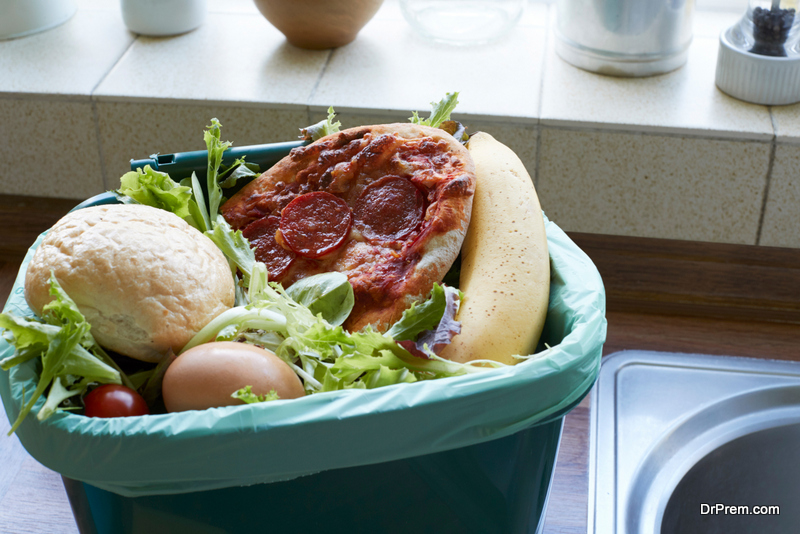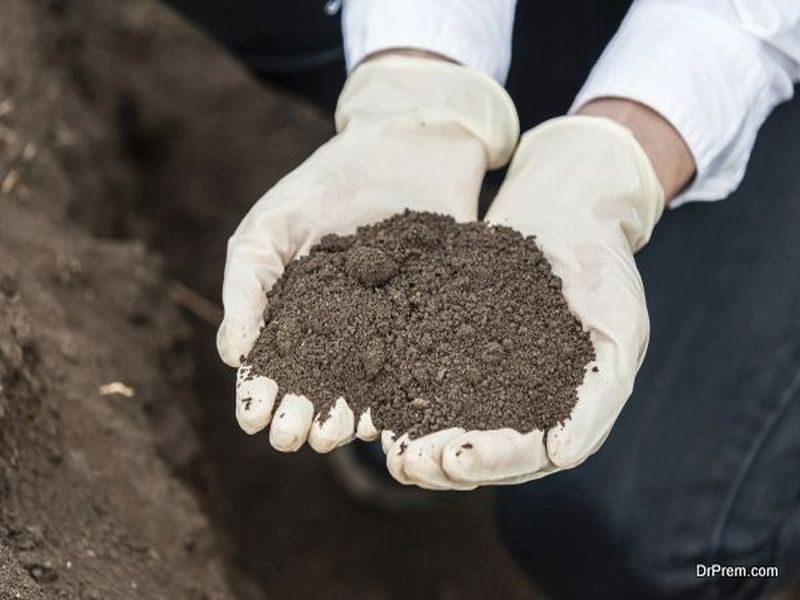Shockingly, over 24% of food produced worldwide goes to waste on a daily basis. This number is alarming, not just because of the sheer quantity, which amounts to billions of tonnes. Moreover, it is also alarming because we are already consuming more than our earth can replenish, and would soon run out of this natural resource. In addition to this, the food industry is also amongst the ones that generate the highest emissions. Therefore, we should do our best to not generate food waste. Although we can reduce our share of the burden by choosing this option, we can’t do so for other people around us. In the end, we are bound to switch to smart ways to recycle food waste.
10 Smart ways to recycle personal food waste
Food waste is recyclable and hence instead of throwing away the leftover coffee grounds, green leafy vegetable wastes, leftover food waste, you can use it in many ways. What happens when you throw it away? It goes to dump yards and they put it in a already overflowing pit. Instead, you can create your own dump pit and make use of these left over foods and create compost or a natural fertilizer for your garden. There are lot many ways one can use fruit peels, vegetable leaves, citrus fruit rinds, shells of fruits, dried up vegetables and more. You can get creative and invent your own ideas to reuse food waste. Here are 10 smart ways to recycle food waste
1. Smart ways to recycle food waste and Make compost
Leftover food waste and vegetable throw away can make great compost for your garden. All you need to do is make a pit for putting this compost in, in your garden and throw all food waste in it everyday. Make sure you don’t add meat leftovers as that can call for animals in your garden. As food waste is biodegradable, it will rot and mix with the soil to make great compost. This compost is very good for growing vegetables and even other plants in your garden. Add small portions of this compost to your garden soil and mix well. See how your garden flourishes in no time.
2. Give to neighbors compost pit
If you have a small house and cannot make a compost pit yourself, you can hand the waste to your neighbors compost pit. Again no meat should be thrown in. Some farmers also have large compost pits, they can pick it up from you or you can hand it over to them once a week.
3. Organic waste recyclers
 You can take your grass cuttings, dried leaves, food wastes to the organic waste recyclers in the town. These are places in the town which collect all the organic waste and recycle them. You can even have a recyclers bin installed in your house, where you can throw all the food waste and the authorities responsible for recycling will collect it once or twice a week.
You can take your grass cuttings, dried leaves, food wastes to the organic waste recyclers in the town. These are places in the town which collect all the organic waste and recycle them. You can even have a recyclers bin installed in your house, where you can throw all the food waste and the authorities responsible for recycling will collect it once or twice a week.
4. Fruit peels pots
When you like gardening, you would have to sow the seeds to make a seedling. These seedlings need to be taken care off while growing. Use fruit peels like the shell of the watermelon or avocado peels with the pulp removed, etc to plant your seeds in. Once the seedling grows, the peels can be used as the compost when you plant it in the garden.
5. Make potpourri
 Why waste money on buying potpourri from the market when you can make it at home? Use all the possible fruit peels and rinds which remain after you have consumed the fruit and dry them either in the sun or a food dryer. Then crush it and add the flavor of your choice. Your homemade potpourri is ready.
Why waste money on buying potpourri from the market when you can make it at home? Use all the possible fruit peels and rinds which remain after you have consumed the fruit and dry them either in the sun or a food dryer. Then crush it and add the flavor of your choice. Your homemade potpourri is ready.
6. Smart ways to recycle food waste and Keep slugs away
Garden slugs tend to eat up your favorite plants and their roots. Hence instead of throwing away groundnut shells or egg shells, you can place them around your plants stem on the soil. garden slugs cannot climb them due to the rough surface and hence won’t affect your plants.
7. Polish brass and copper
 Lemon and lime contain citric acid and the peel contains more of it. You can use the leftover peels to rub copper or brass items. They will bring a great shine and clean these things very well.
Lemon and lime contain citric acid and the peel contains more of it. You can use the leftover peels to rub copper or brass items. They will bring a great shine and clean these things very well.
8. Easter Eggs dye
Easter eggs are always colored with artificial colors which can be harmful for your body. Instead boil the eggs with a few onion skins. The eggs will get a dark yellow or orange color. Not only is this one of the smart ways to recycle food waste but it saves you the trouble of throwing away the online skins.
9. Peanut Shells for grilling
 Barbeque grilling needs a lot of coal and fuel to keep it burning for long. One of the smart ways to recycle food waste is to use peanut shells instead of coal. Soak them in water in advance and dry them a bit before use and put them over your coal in the grill. They burn for a long time and keep the fire going.
Barbeque grilling needs a lot of coal and fuel to keep it burning for long. One of the smart ways to recycle food waste is to use peanut shells instead of coal. Soak them in water in advance and dry them a bit before use and put them over your coal in the grill. They burn for a long time and keep the fire going.
10. Bird houses from gourds
You can use left over large sized gourds rather than throwing it out. Dry them and treat them for smell. Make them hollow and use as bird houses in your garden.
7 Ways of Cutting down on global food waste and loss
That was on the individual level. However, with the world’s population well on its way to reach the 9 billion mark by the year 2050, it is time that we reduce wastage of food on a global scale. A number of organizations have come up with effective strategies that would help entire communities achieve this goal, albeit without losing too much time or money in the process. Here are some of those strategies explained.
1. Improvise storage methods

A lot of food that would otherwise go to waste can be effectively saved via simple and low cost, but highly effective storage solutions. This is more applicable to small scale farmers who usually lose food and produce to spoilage, pests, transportation, etc.
Consider the storage solution offered by the researchers at Purdue University for example. The system stores grain in three interlocking plastic bags to ward off pests and keep the produce fresh for even months on end. Another example is that of the metal storage silo that has been developed by the Food and Agriculture Organization. These small metal storage containers have been instrumental in cutting down food loss in this phase to nearly zero. Simple tactics like substituting plastic bags and sacks with plastic crates can also help reduce food loss during transportation.
2. Reduction in Portion Sizes

Most of the restaurants worldwide tend to serve huge sized portions, most of which goes to waste at the end of the day. The same can be said for buffets as well. One way to thwart food loss due to this is to encourage the restaurants to serve smaller portions of the menu items.
3. Enhanced food date labels

A lot of confusion goes into correctly interpreting a food label. Many of us cant make out the difference between ‘best before’, ‘use by’ or ‘sell by’ dates. In most cases, this leads to a lot of good food being thrown out mistakenly. In fact, confusing food labels lead to the loss of one fifth of the food that is thrown out.
An effective way to end this confusion is to do away with multiple labels and stick to just one that says ‘use by’. For instance, labels like ‘sell by’ dates that give information to the retailers as well as ‘display until’ dates that give information to the grocery retailer, can all be scrapped off the food packaging to give way to one ‘use by’ date which would let individuals know when they need to throw out the food.
4. Promoting Food Wastage Reduction via Entities
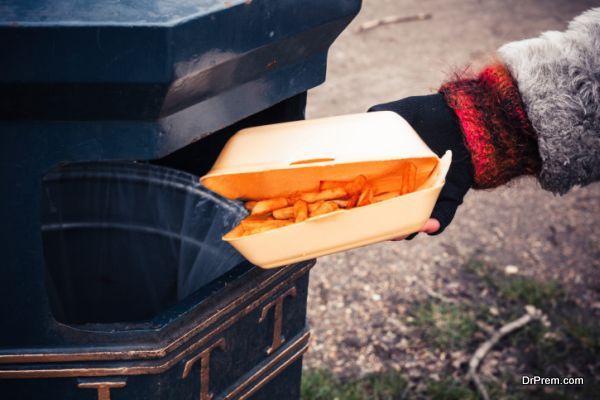
Creating separate bodies or entities that encourage and promote entire communities to reduce food wastage is considered as a good way to reduce waste. For instance, an entity called WRAP works along with the government and private businesses to promote waste reduction in developing countries. The tasks undertaken by this entity include encouraging factory owners to minimize waste during operations, grocery retailers to reduce waste in their stores and the public to reduce household food waste.
5. Redirection of food
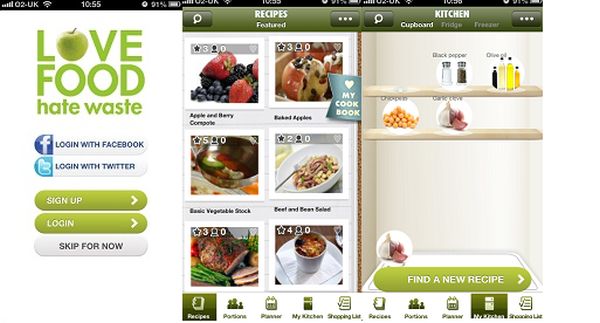
The sad thing is that while a lot of good food is being wasted on one end of the earth, another end is literally going hungry without it. In this case, adopting strategies like food rescue and food transformation can help redirect excess food from one place to areas where it is needed. For instance, the Spoiler Alert app is an online marketplace that helps offer real time exchange information of excess, spoiled and expiring food. Another app called Love Food, Hate Waste helps educated households on how to cook meals with leftovers.
6. Redistribution of food
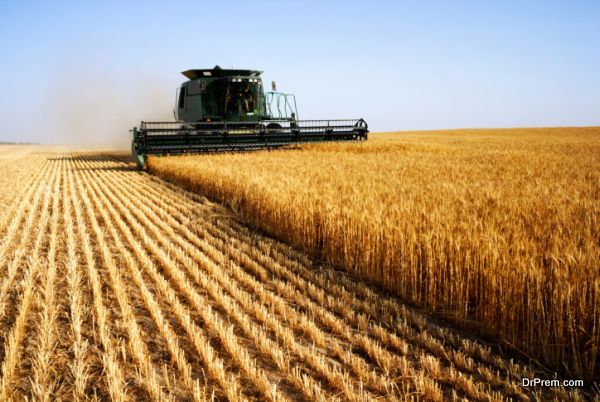
In some cases, a farmer may get more produce than he/she wanted and would not have enough money to harvest the entire field. However, this is not the same every time. In other cases, a grocery retailer may have ordered too much of an item and would not be able to sell it. Moreover, in order to prevent all this nutritious food from going to waste, one can opt to redistribute it to food banks and other outreach groups. For instance, Australia’s SecondBite helped redirect over 3000 metric tons of food to food banks across the nation in 2012.
7. Increased interest and investment in post harvest loss reduction
Not many are aware of the fact that when it comes to developing countries, most of the food loss tends to happen at the farms where the food is produced. However, lack of government initiatives means these farms get only 5% or less of funding that helps minimize post harvest loss. Increased interest as well as investment in this area would therefore, help prevent food loss in these farms to a great extent.
Summary
Millions of tons of food go to waste every year owing to myriad reasons like confusing food labels in grocery stores and post harvest losses in farms. The tips mentioned above would help individuals as well as their communities join hands and minimize food wastage so that the world is still left with plenty of food to share with every one once its population hits the 9 billion mark.


